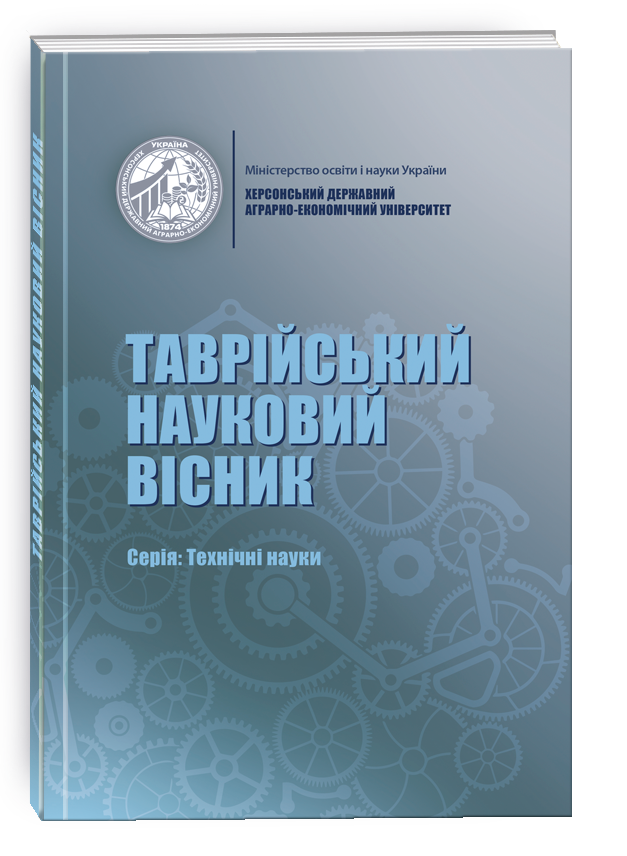IMPROVEMENT OF TECHNOLOGICAL MODES OF AMBER WINE’S PRODUCTION AT THE ODESSA REGION’S CONDITIONS
DOI:
https://doi.org/10.32782/tnv-tech.2023.2.25Keywords:
technology, amber wime, pulp maceration, wine, qualityAbstract
The analysis of modern scientific directions of the work of scientists in the field of winemaking shows a rather high interest of professionals and wine connoisseurs all over the world in wines made from white grape varieties, the technology of which involves contact with the pulp. In this regard, the article provides a brief review of scientific works aimed at improving the technology of wines from white grape varieties using different modes of pulp maceration. Enologists from the United States of America, Italy, Croatia and other countries pay great attention to the influence of the maceration mode of white grape pulp on the physical and chemical composition, aroma and quality of finished wines. The use of various technological parameters of the maceration process of white pulp allows to obtain different types of wines – from typical white table wines with a distinct varietal aroma to full, rich in bouquet and extractive in taste amber wines. The high historical and physiological value of amber wine contributes to the expansion of the geography of this type of wine. The article analyzes the physico-chemical composition and organoleptic characteristics of amber wine, which were prepared under micro-winemaking conditions on the basis of the research laboratory of the Department of Wine and Sensory Analysis of the Odesa National Technological University from the Rkatsiteli variety. The experiment involved two blocks of research. In the first case, the grapes were crushed, moderately sulfitated, after which the pulp was macerated for two, five, ten, twenty, and thirty days. Next, the pulp was sent to pressing, and young wine materials to residual fermentation and clarification. In the second case, the obtained young wine materials after illumination were subjected to additional maceration on the pressed pulp of previously withered Rkatsiteli grapes for 10 days. Amber wine Rkatsiteli was used as a standard, which was obtained according to the classic Kakhetian technology in a kverva at the Georgiy Berikashvili winery, Gurzhansky district, Vachnadziankari microzone, Kakheti. On the basis of a comparative evaluation of experienced amber wines with a reference sample, conclusions were made about the influence of terroir on the style of amber wine. It is shown that the technological regime of maceration largely determines the physical and chemical composition, typicality and quality of amber wine. Optimal technological parameters have been established, allowing to prepare typical wines such as amber wine from Rkatsiteli grapes at the Odesa region’s conditions.
References
Marais J. Effect of different wine-making techniques on the composition and quality of Pinotage wine. I. Low-temperature skin contact prior to fermentation. South African Journal of Enology & Viticulture. 2003. № 24 (2). P. 70–75. DOI: 10.21548/24-2-2642.
Piombino P., et al. Effects of off-vine bunches shading and cryo-maceration on free and glycosylated flavours of Malvasiadelle Lipari wine. Int. J. Food. Sci. Technol. 2010. № 45. P. 234–244. DOI: 10.1111/j.1365-2621.2009.02126.
Carillo M., et al. An inertizing and cooling process for grapes cryo-maceration. Electron. J. Biotechnol. 2011. 14. P.6–14. DOI: 10.2225/vol14-issue6-fulltext-10.
Naviglio D., et al. Study of the Grape Cryo-Maceration Process at Different Temperatures. Foods. 2018. № 7(7). P. 107. DOI: 10.3390/foods7070107.
Carillo M., et al. An inertizing and cooling process for grapes cryo-maceration. Electron. J. Biotechnol. 2011. № 4. P. 6–14. DOI: 10.2225/vol14-issue6-fulltext.
Formato A. et al. Supercritical fluid extraction of α-and β-acids from hops compared to cyclically pressurized solid–liquid extraction. J. Supercrit. Fluid. 2013. № 84. P. 113–120. DOI: 10.1016/j.supflu.2013.09.021.
Gómez-Míguez M., et al. Effects of prefermentative skin contact conditions on colour and phenolic content of white wines. J. Food Eng. 2007. № 78. С. 238–245. DOI: 10.1016/j.jfoodeng.2005.09.021.
Bavčar D, et al. The influence of skin contact during alcoholic fermentation on the aroma composition of Ribolla Gialla and Malvasia Istriana Vitisvinifera (L.) grape wines. Int. J. Food Sci. Technol. 2011. № 6. P. 1801–1808 DOI: org/10.1111/j.1365-2621.2011.02679.
Peinado R.A., et al. Comparative study of aromatic compounds in two young white wines subjected to pre-fermentative cryo-maceration. Food Chem. 2004. № 4. P. 585–590. DOI: 10.1016/S0308-8146(03)00282-6.
Саймон В., Райан О. Amber Revolution. Як світ закохався в оранжеве вино. Yakaboo Publishing, 2020. Р. 304.
Bonné J. San Francisco Chronicle. Shedding light on orange wine. Inside Scoop S, June 15, 2010.
Asimov E. Orange Wines. The New York Times: The Pour, August 3, 2009.







